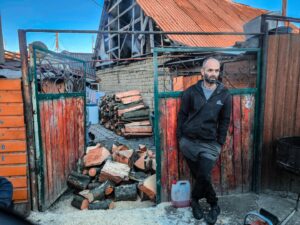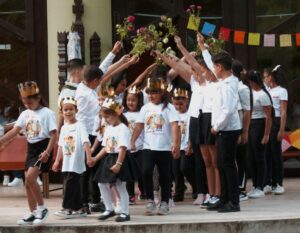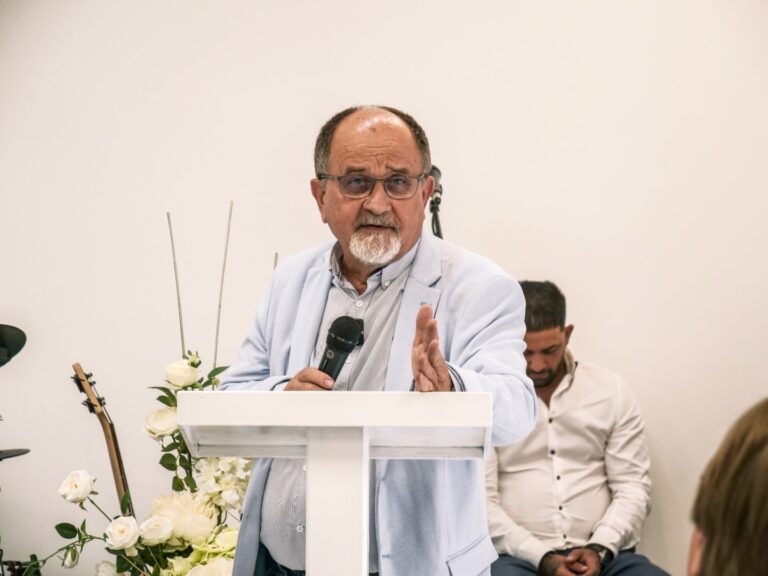The Holocaust is often associated with the Jewish tragedy, yet the Roma community also endured immense suffering during this period. Hungarian Gypsy Missions International commemorates International Roma Holocaust Memorial Day each year. In today’s episode of ReményCast, historians Csaba Katona and Attila Rácz discuss the fate of the Roma community during World War II and the post-war conditions in Budapest for Roma people. By highlighting personal tragedies, they illustrate the horrific suffering endured by persecuted individuals, stressing the importance of confronting past injustices for social integration and a shared understanding of history.
While the Holocaust is primarily remembered as a Jewish tragedy, the Roma community was also deeply affected. How and when did you begin exploring this topic?
My research primarily focuses on the 19th century, but I was drawn to studying the Roma’s history through their musical heritage. I first encountered the Roma community in relation to musicians and cultural life. Later, at a conference in Pécs dedicated to Roma history, I realized how uncharted the Roma Holocaust truly was. Though I mainly focus on the 19th century, I feel it’s crucial to address the Roma Holocaust. For me, it’s nearly a mission, as their tragedy is also a tragedy for the Hungarian nation and humanity as a whole.
How did the deportations of the Roma begin, and what led to this?
Deportations began in autumn 1944 when thousands of Hungarian Roma were rounded up at Budapest’s central power plant. Many were subsequently transported to Auschwitz and other concentration camps. The largest mass killing of Roma took place on August 2, now commemorated as International Roma Holocaust Memorial Day. Tragically, not all survivors could return home, as many perished under the inhumane conditions in camps or during the journey back. Although exact numbers remain uncertain due to incomplete records, the loss of every innocent life is a profound tragedy. Personal stories and individual fates allow us to grasp the true weight of the Roma Holocaust.
Were Roma deportees treated the same as Jews?
Unfortunately, yes. Roma deportees faced the same extreme cruelty as Jewish people, sometimes even worse. They were among the most vulnerable and were often categorized merely as a “group of people” rather than individuals. The Roma endured appalling levels of humiliation and inhumane treatment, with particularly high mortality rates due to executions and deplorable conditions during transit and in the camps, especially for the elderly and children.
A book has been published examining not only the wartime period but also the years afterward. Could you share what it covers?
The book explores the lives of Budapest’s Roma communities post-World War II, drawing on records from the Budapest City Archives. These documents shed light on discrimination faced by the Roma, such as forced hygiene measures. It highlights the events of the Roma Holocaust and the ensuing social challenges, referencing the “Digital Archives” database. This database, containing personal stories, victim names, and occupations, aids in researching the Roma Holocaust and is accessible to all who are interested.
Can you explain how people chosen for deportation were selected, regardless of age? What motivated these decisions?
Similar to the Jewish community, the Roma were persecuted based on racial theory, deemed unworthy of life under Nazi ideology due to their “non-Aryan” status. This collective condemnation led to widespread death sentences. Dictatorial regimes like Nazism and communism often designate “enemies” based on origin, social background, or political views. The Holocaust’s unique brutality lay in decisions about life and death made purely on racial grounds, deeply impacting the Roma as well.
How did life change for the Roma after the war? Were they even recognized as a nationality?
Unfortunately, post-war life for the Roma saw little improvement, and conditions may have even worsened under the Kádár regime, particularly after 1956. The Roma weren’t seen as an ethnic group but rather a social class, a stance shaped by János Kádár’s policies. The idea was that improving their living conditions would lead them to “become Hungarians,” effectively erasing their identity. Party directives labeled the Roma community through stereotypes like “Gypsy crime,” which fueled discrimination. Police records document such biases, further marginalizing the Roma.
Did many Roma move from the countryside to the capital at that time?
Yes, many Roma moved to Budapest, mainly to seek job opportunities amid the industrialization of the Kádár era. Another factor was urban development, which saw rural Roma taking refuge in temporary housing in old districts until they could secure permanent residences. The eighth district of Budapest had a significant Roma population, as communist authorities divided properties to create housing opportunities, displacing the middle class and filling the area with the proletariat and, later, Roma communities.
Who were in better financial condition? Presumably, Roma musicians?
Yes, musicians were often better off, though their social status varied before and after 1945. In the Kádár era, Roma musicians were categorized: some were on the path to assimilation, while others were fully integrated. By the 19th century, Hungarian Gypsy music had gained prominence in Western Europe and the United States, with Roma band leaders earning as much acclaim as modern rock stars. However, despite this recognition, musicians were never considered socially equal to non-Roma.
How do you view the process of addressing the Holocaust and other traumas within the Roma community?
Addressing these traumas is still in its infancy, hindered by scarce sources and ongoing prejudice. The Holocaust wasn’t just a result of underdeveloped social dynamics; it stemmed from a series of brutal choices. Since the political transition, relations between authorities and the Roma have somewhat eased, allowing for minority rights and self-governance. Despite positive steps, social challenges remain. Time may aid healing, but systemic and social obstacles persist.
Could the Roma openly practice their faith during the Kádár era, and what evidence supports this?
Practicing faith was challenging, as the Roma weren’t recognized as a nationality. However, archival records reveal how authorities sought to limit religious activities. Each county council had a Religious Affairs Office overseeing religious groups, with reports documenting official attempts to infiltrate and monitor church communities in the late 1940s. This historical documentation shows the restrictive environment for religious expression, allowing us to piece together how Roma communities preserved their faith despite suppression.
How do you see the current and future state of Roma research, especially considering the interest shown by the public and the Roma community?
Research on Roma history is steadily gaining traction, both within the general public and the Roma community. This growing interest is evident at conferences, where many Roma actively engage in discussions about their heritage. Such involvement is vital for understanding our shared history. Events like those in Pécs exemplify the importance of collaboration, fostering identity and mutual respect. Publishing works on shared historical themes in multiple languages further supports ethnic cooperation and shared heritage. Participants remain optimistic about Roma research as a flourishing field that holds potential for long-term social integration.















